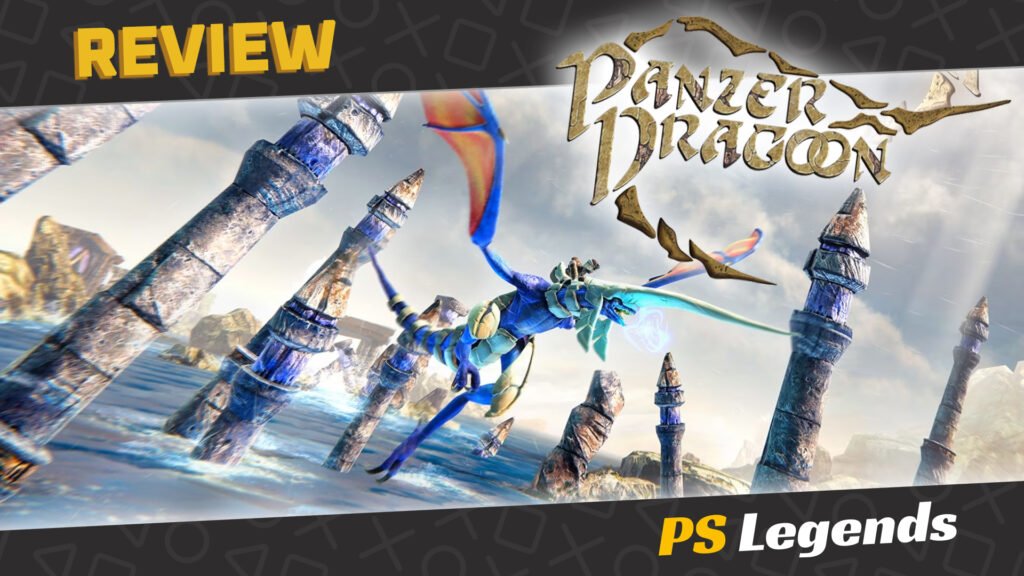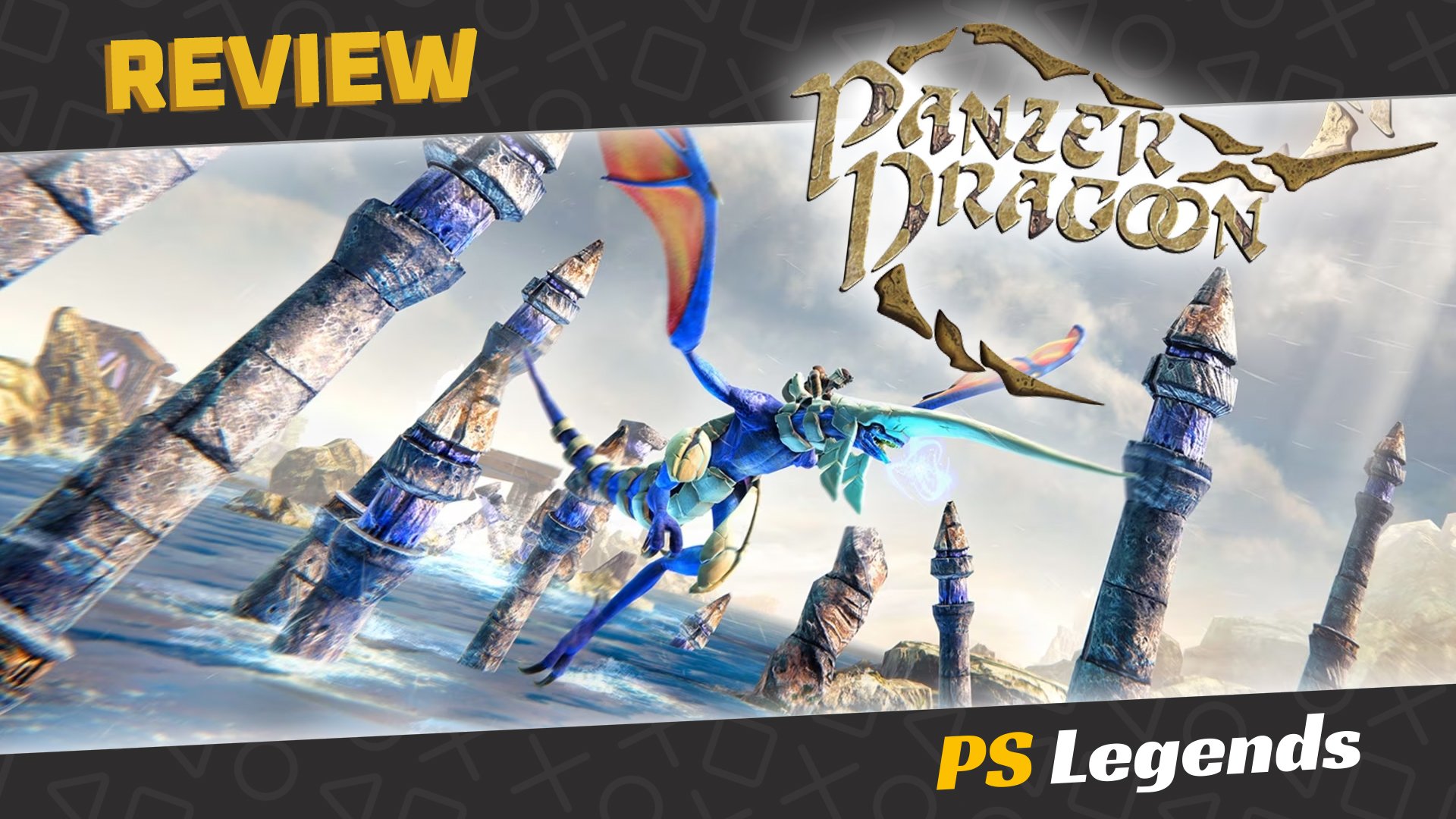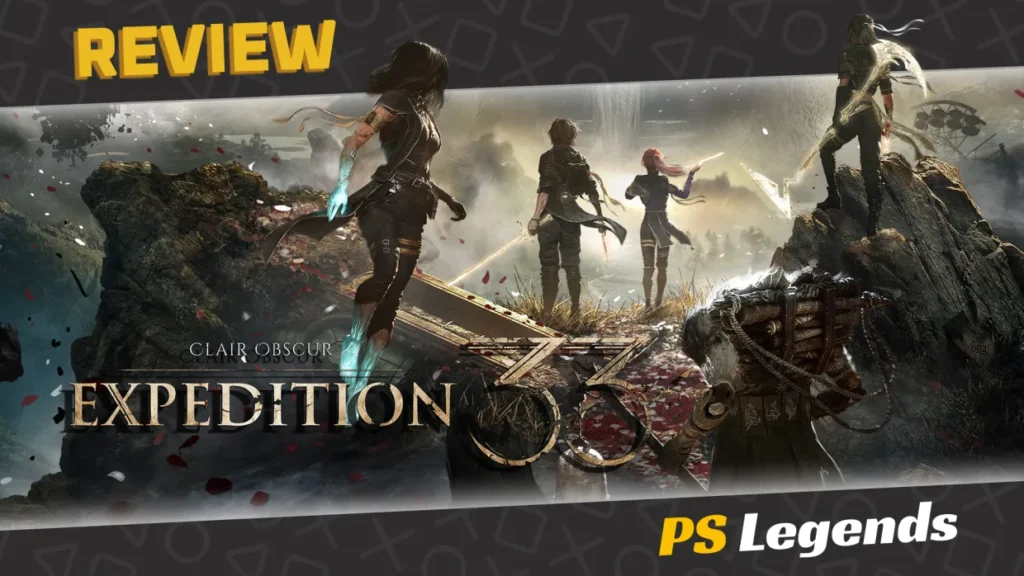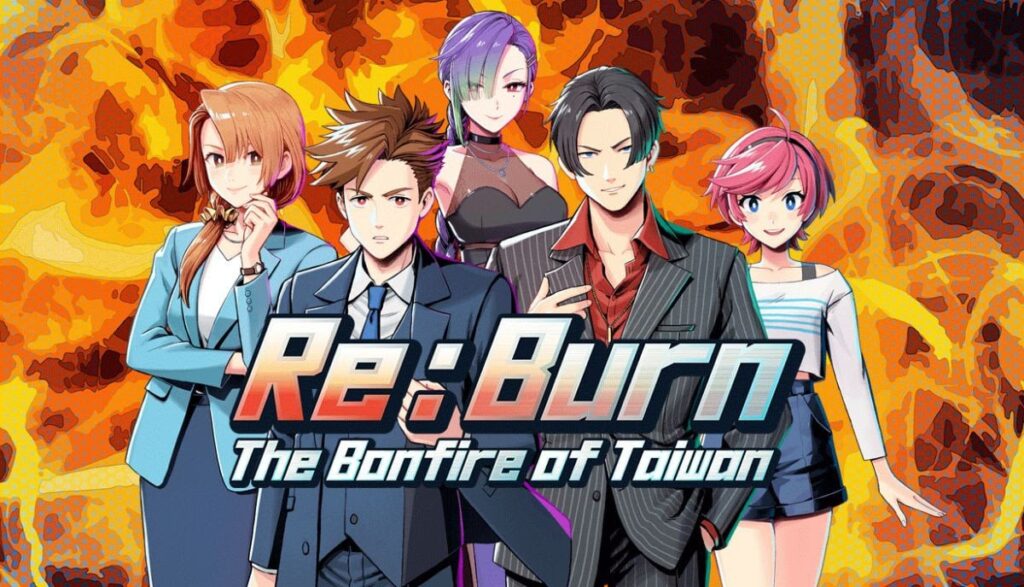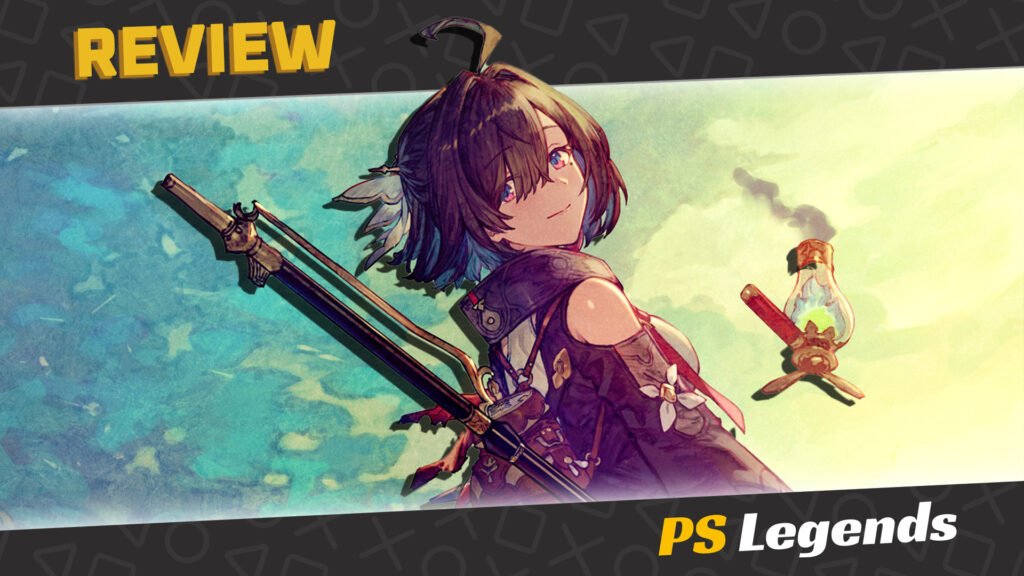Sega is a weird developer. The constant chopping and changing of its teams means those poor staff must never know where they’ll end up next. Even high-profile departments like Sonic Team and AM2 have been known to disappear for years on end before re-emerging to plug their new releases, whilst other teams like Team Andromeda, Smilebit, and Camelot: Team Sonic! have pretty much disappeared entirely amongst the confusing corporate restructures. It’s no wonder executives like Yuji Naka leave to start their own company, albeit with disastrous results. I’m looking at you Balan Wonderworld.
On This Page
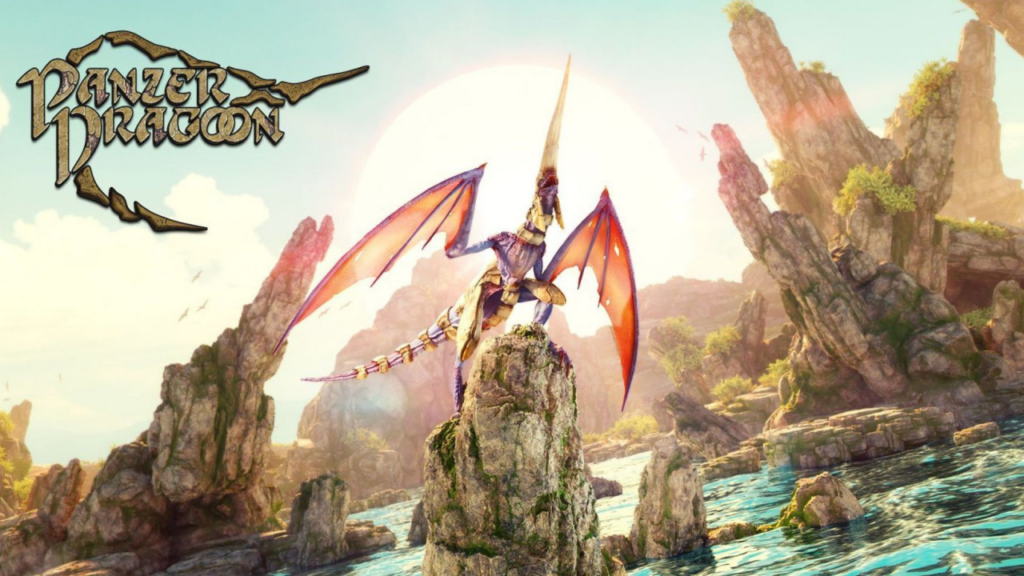
Introduction
Team Andromeda would be our focus today (alongside successor Smilebit) as this lovely lot developed a series of games that helped breathe some life into Sega’s struggling Saturn console. Whilst this little machine couldn’t compete with the raw power of the Nintendo 64 or the quality and quantity of games releasing for Sony’s big-budget new PlayStation, it wasn’t going down without a fight, and its heavily discounted games were a lifesaver for young, teenage me since I wasn’t old enough to earn the sort of disposable income required to fund those expensive PlayStation games which, at the time, we never thought would catch on. Ah, naive youth.
The outcome of this was the creation of a trilogy (later quadrilogy) of games that fused together the fantasy element of dragons with a post-apocalyptic world the likes of which we’d never seen before. It was something of a first for console gaming to see a ruined world where life was an oppressive struggle, yet learning about the precursors and their incredible technology made the turmoil almost worthwhile. This series, of course, is Panzer Dragoon, and we’ll start at the very beginning.
Whether it’s the lack of budget to create follow-ups in franchises that didn’t immediately exceed sales expectations or the constant scattering of its developers, Sega suffers from what I can only describe as a fear of commitment and will often abandon beloved franchises (even Shenmue was largely forgotten in favour of Yakuza, despite the two sharing both an engine and theme) leaving third party developers and even fans to revive our favourite games and franchises. This even includes several Sonic games. Panzer Dragoon: Remake is the work of promising new Polish developer, MegaPixel.
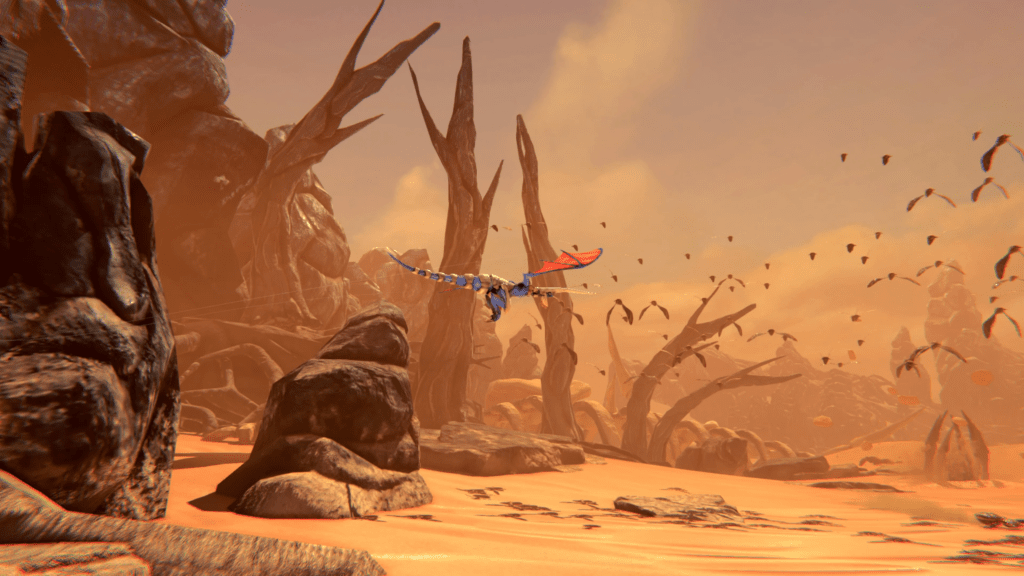
Story
Panzer Dragoon is set in the distant future, thousands of years after a great war between humans and their biologically engineered weapons, where humans live in scattered settlements, from small tribes to large nations. One nation, oppressively controlled by a tyrannical Empire, has discovered a black tower in the middle of a lake near their capital, which gave them access to large amounts of ancient weapons which they have used to beat back and control the ever-present monsters in the world. The Imperials were corrupted by this power and became conquerors of others as opposed to liberators from a violent world.
Our protagonist, beast-hunter Keil Fluge, after witnessing an Imperial flying battleship in the sky, is attacked by two creatures and chases one into an ancient complex built directly into rock. He explores the ruin and sees relics of old technology still hanging from the ceilings. Another gigantic creature suddenly attacks him, and though his weapon is useless against the armoured creature, a cave-in crushes the monster, saving him. From the newly created hole, an armoured, blue dragon flies down the cavern with a rider across its shoulders, being chased by an even bigger black dragon as the cavern is destroyed in an explosion.
Regaining consciousness outside, Keil sees the two dragons locked in aerial combat before him. Dodging a blast from the black dragon, the blue dragon’s rider is then hit by single shot to the chest, and the black dragon flies away. The blue dragon flies towards Keil. A psychic connection is made between the rider and Keil, who is told not to let the black dragon reach the black tower. The rider then dies and Keil picks up his fallen gun, climbs atop the dragon and flies away, determined to finish the rider’s quest.
This first chapter of the Panzer Dragoon legend tells the short tale of a race between a pure-blooded blue dragon known as the Solo Wing along with Keil as its rider, against a genetically-engineered prototype black dragon controlled by the totalitarian empire which aims to activate the Tower, an ancient, ruined facility which can create and enhance dragons and other beasts.
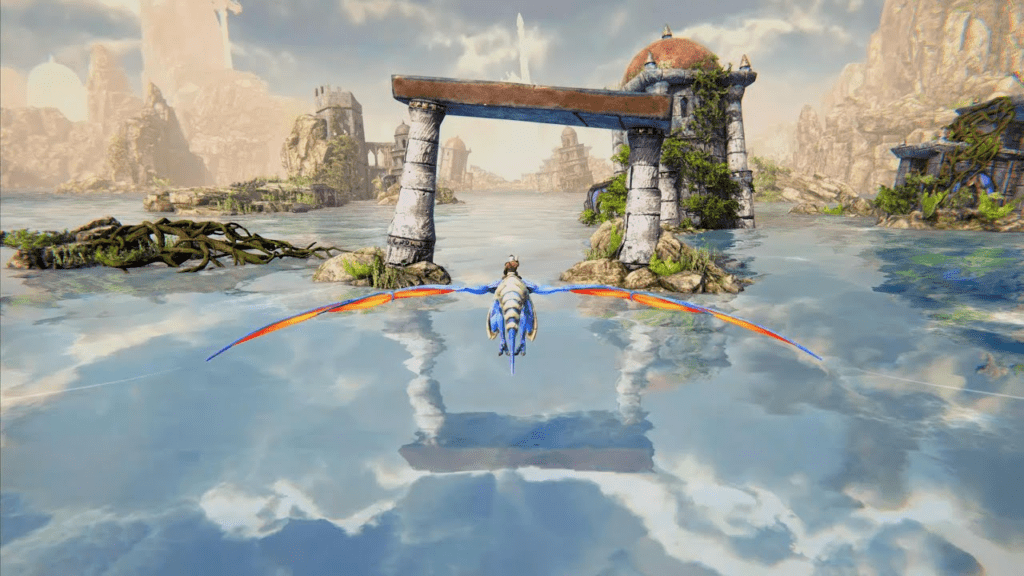
Gameplay
Panzer Dragoon is an ‘on-rails’ shooter. The game spans six levels, each lasting around ten minutes, with a variety of boss battles. Over the course of the game, the plot is revealed through cutscenes using the game’s own graphics engine. Gameplay consists of a player controlling a flying dragon and its rider through an aiming reticule that can be moved over the whole screen. The player must shoot a variety of enemies ranging from machines to monsters in a 3D post-apocalyptic fantasy environment of barren landscapes and mysterious ruins of a fallen civilization.
Progression through the levels is made at a predetermined pace as the player is constantly set along a rail of gameplay. The only time the game briefly pauses is during boss battles. The field of vision can be directed with the aiming reticule on the x and y-axis, but the overall direction of travel is predetermined. The dragon follows the reticule movements, allowing the player to avoid enemy projectiles and obstacles by making more extreme motions.
The player has a full, 360-degree field of view, and can quickly look left, right, forward, and behind the dragon. Enemies come from all directions, varying in size and health, and also appear on an on-screen radar that monitors the dragon’s surroundings. Two weapons are available: the rider’s handgun, which can be fired with a single button press when an enemy enters the aiming reticule, and the homing laser fired by the dragon, which can lock-on to up to eight enemies by moving the reticule over them while holding down the ‘fire’ button. Some situations with many enemies on screen require the use of the lock-on laser, while in others, quick gunshots to weak spots will prove more efficient.

Graphics/Sound
Panzer Dragoon: Remake has been handled with a lot of love and care, recreating the gorgeous scenery from the ground up and including a photo mode which I’m pleased to say I actually used. The frame-rate problems are now non-existent which massively improves the gameplay. Even those animated story video scenes are completely remade. This is how you do a remake.
Team Andromeda set to work on elaborating an extensive back story, and Futatsugi, to be original and to avoid using Japanese or English, went so far as to create a fictional language known simply as ‘Panzerese’ for the game: a mix of Ancient Greek, Latin and Russian. This was apparently inspired by the anime The Wings of Honneamise, of which team members were fans and which also features an invented language.
The original soundtrack also returns with volume re-balancing for modern audio outputs. It’s a superb collection of tracks from start to finish, all of which manage to bring out the mysterious nature of this forgotten world and the eerie creatures which creep out of the shadows. I’m pleased to say this component needed very little improvement.

Replayability/Trophies
Despite the game’s excellence and straightforward design, I confess I chose to stop playing at 90% trophy completion. Sadly, there’s one little trophy that overstays its welcome. You can grab all other trophies in just a couple of 90-minute playthroughs by using the cheat menu which includes God mode. Don’t feel bad about using the cheats since the game actually encourages you to do so, with a couple of trophies tied to trying them out.
This means you can hit 90% completion in about 3 hours, yet that final trophy asks for 100 hours of playtime. You can get too much of a good thing, you know. Time to stop before things get needlessly grindy. I’m not sure another sixty-five playthroughs would be the best use of my time. If we leave things there, I can end my time with the game on a glorious high-note.
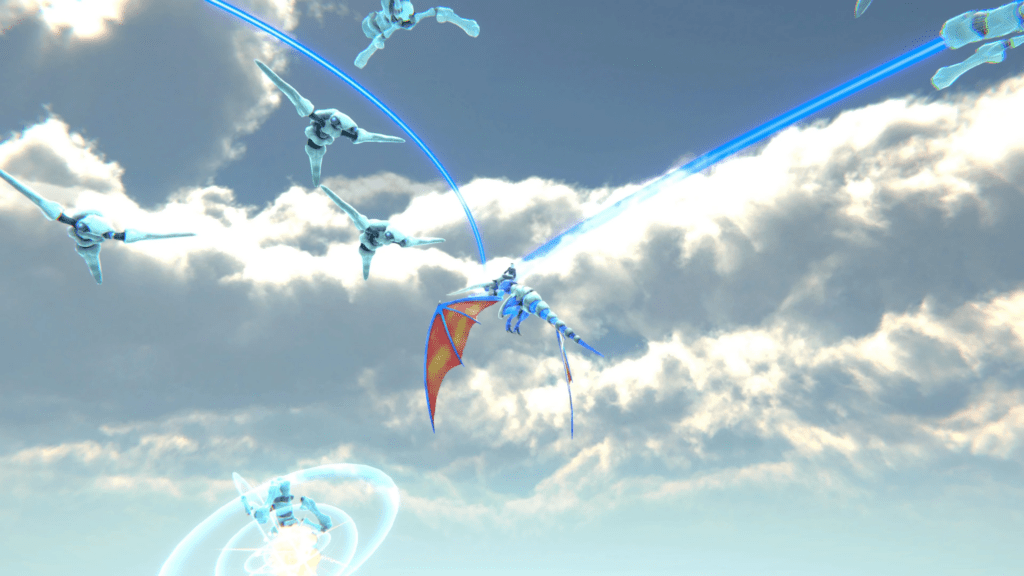
Conclusion
This is an iconic journey that takes us on a scenic adventure across a war-torn land reclaimed by both nature and mutated creatures, in vistas which we’d get to explore in more and more detail in each sequel. Being the first game in the series originally meant that riding your dragon through these environments in this on-rails shooter wasn’t exactly optimised for the hardware available at the time. As such, the game was a struggle to play as the frame-rate available was abysmal, and even made what should be a beautiful game surprisingly ugly. Nevertheless, it was the start of something special.
There is a fascinating world here; one that players couldn’t wait to see more of. Revisiting these locations (or variations of them) in each sequel made for rewarding discoveries of archaeological wonder, yet a console that struggled to maintain constant 32-bit visuals, in hindsight, probably wasn’t the best place to showcase such marvels. That’s where this absolutely gorgeous revival comes in. I’ve got my eye on you MegaPixel. I’ll be eagerly awaiting your Panzer Dragoon II Zwei remake, and if you’re feeling ambitious, maybe take on Saga and Orta too? No pressure.
Joys
- A fully faithful recreation of the original game
- Some of the most gorgeous visuals you’ll ever see
- The return to a fascinating, post-apocalyptic world
Cons
- No matter how you look at it, it’s still a very short game
- Ridiculous trophies
